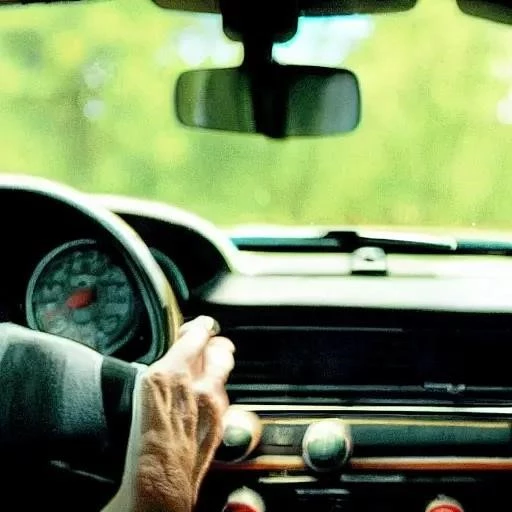In an automotive landscape increasingly dominated by automated gearboxes and electric powertrains, the manual transmission stands as a defiant, cherished relic. For a dedicated legion of enthusiasts, the tactile engagement, the precise control, and the sheer joy of perfectly executing a shift remain unparalleled. This isn’t merely about nostalgia; it’s about a profound connection between driver and machine, a mechanical ballet of clutch and gear that transforms every journey into an exhilarating experience. But as the options dwindle, a critical question emerges: which manufacturers are still passionately upholding the art of crafting the very best manual transmission cars?
The debate over the “best” manual is a vibrant, often passionate, discussion among gearheads worldwide, encompassing everything from the smoothness of the shift to the weight of the clutch pedal and the precision of the gates. It’s a nuanced assessment, considering not just the gearbox itself, but how it integrates with the engine and the overall vehicle dynamics. By integrating insights from seasoned automotive journalists, engineering experts, and the collective wisdom of enthusiast communities, we can begin to discern the true champions in this surprisingly resilient segment, those brands that consistently deliver an engaging, rewarding, and incredibly effective driving experience.
Leading Manufacturers & Their Manual Transmission Excellence
To provide a structured overview of the key players in the manual transmission arena, here’s a table highlighting their general strengths and standout features. This information can serve as a quick guide for enthusiasts and prospective buyers alike, offering a glimpse into what makes each brand’s manual offerings particularly noteworthy.
| Manufacturer | Signature Manual Transmission Traits | Notable Models (Past/Present) | Enthusiast Appeal / Philosophy | Official Website (Example) |
|---|---|---|---|---|
| Porsche | Remarkably precise, short throws, mechanical feel, often paired with high-revving flat-six engines. | 911 GT3 (992), 718 Cayman/Boxster GTS 4.0, 911 Carrera (various generations) | Uncompromising driver engagement, ultimate performance, engineering purity. | Porsche.com |
| Honda | Legendary for buttery-smooth shifts, short throws, incredible reliability, light clutch action. | Civic Type R, S2000, Integra Type R, older Civics/Accords | Accessible performance, everyday usability, precision engineering, enduring reliability. | Automobiles.Honda.com |
| Mazda | Exceptional mechanical feel, direct connection, light and crisp shifts, perfectly weighted clutch. | MX-5 Miata (all generations), RX-7, Mazda3 (some trims) | Jinba Ittai (rider and horse as one), focus on driver feel, lightweight design. | MazdaUSA.com |
| BMW | Solid, precise, robust feel, often paired with powerful inline-six engines, satisfying engagement. | M2, M3/M4 (various generations), Z4 M, 1 Series M Coupe | Ultimate Driving Machine ethos, blend of luxury and performance, driver-centric. | BMWUSA.com |
| Toyota (GR Division) | Robust, engaging, designed for performance driving, specific tuning for GR models. | GR Corolla, GR Supra (manual option), GR86 | Rebirth of driver’s cars, focus on pure driving pleasure and motorsport heritage. | Toyota.com/GR |
The Architects of Engagement: What Sets Them Apart?
Delving deeper, manufacturers like Porsche stand as titans in this specialized field. Their manual gearboxes, found in models such as the 911 GT3 or the 718 Cayman GTS 4.0, are not just components; they are finely tuned instruments. “The manual in a modern Porsche isn’t just a transmission; it’s a statement,” affirms Chris Harris, a revered automotive journalist, highlighting its incredible precision and the deeply satisfying mechanical feedback that resonates through the shifter. Each shift is a deliberate, rewarding action, perfectly complementing their high-revving, naturally aspirated engines, creating an unparalleled symphony of power and control.
Honda, too, has long been celebrated for its brilliantly engineered manual transmissions. From the iconic S2000 to the current Civic Type R, Honda’s manuals are renowned for their incredibly smooth, short throws and light clutch action, making them a joy to operate whether on a winding road or in urban traffic. Their commitment to driver involvement has consistently produced gearboxes that are both forgiving for novices and incredibly rewarding for experienced drivers, solidifying their reputation for everyday drivability merged with exhilarating performance. This balance is a testament to Honda’s meticulous engineering philosophy, ensuring durability alongside engaging dynamism.
Mazda’s dedication to the manual transmission is perhaps best exemplified by the MX-5 Miata, a car whose very essence is built around the driver-car connection. The Miata’s manual gearbox is often cited as a benchmark for its direct, crisp feel and perfectly weighted clutch pedal. It embodies Mazda’s “Jinba Ittai” philosophy – rider and horse as one – demonstrating how a well-integrated manual can elevate the entire driving experience. This unwavering focus on tactile feedback and intuitive control makes every shift feel like an extension of the driver’s will, fostering an intimate dialogue with the road.
A Future Forged in Steel and Passion
While the broader market increasingly favors automatics for their convenience and efficiency, the persistent demand for engaging manual transmission cars ensures their survival, albeit in a more specialized niche. BMW, with its M cars, continues to offer manual options, acknowledging the preferences of its performance-oriented clientele. Similarly, Toyota’s burgeoning GR performance division, with models like the GR Corolla and GR Supra, is actively embracing and celebrating the manual gearbox, understanding its critical role in delivering pure driving enjoyment. These manufacturers are not merely holding on to tradition; they are actively innovating, refining, and celebrating the manual, recognizing its unique value proposition.
The future of manual transmissions, while not mainstream, remains incredibly bright within the enthusiast segment. Companies are investing in technologies like rev-matching systems, making manuals more accessible without sacrificing the fundamental engagement. This forward-looking approach ensures that the art of shifting gears will continue to captivate new generations of drivers, preserving a vital link to automotive history while evolving for modern demands. The enduring appeal of these meticulously crafted machines speaks volumes about the human desire for control and connection, a testament to the fact that some experiences are simply too rich to automate away.
Ultimately, determining “who makes the best” manual transmission cars often comes down to subjective preference and the specific driving experience one seeks. However, brands like Porsche, Honda, Mazda, BMW, and Toyota’s GR division stand out for their consistent dedication to engineering excellence, driver engagement, and an unwavering commitment to the manual gearbox. They are the torchbearers, ensuring that the thrill of the stick shift endures, promising a future where the mechanical dance of man and machine continues to inspire and excite.






